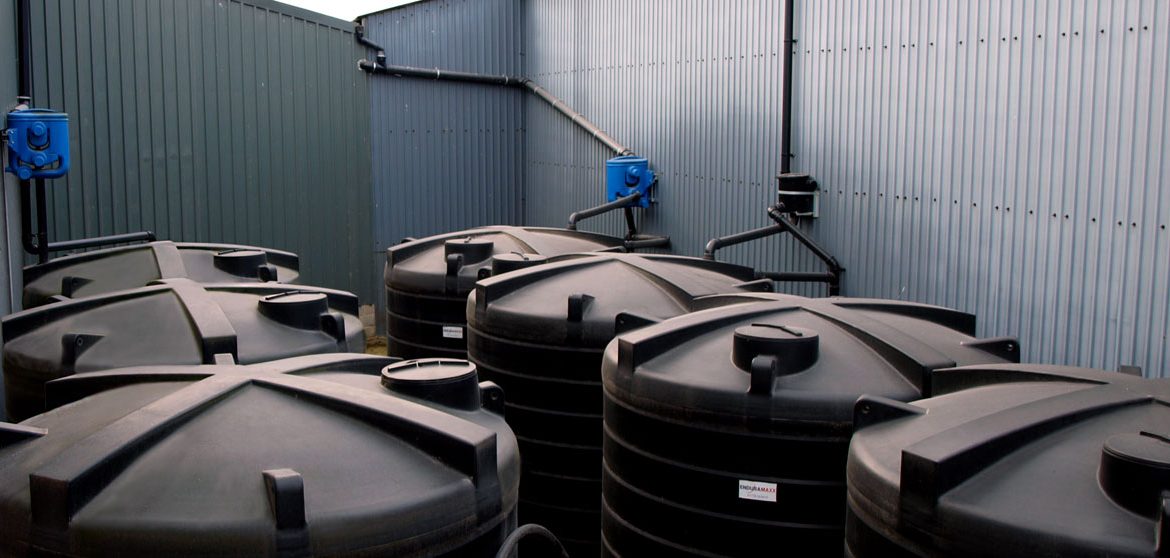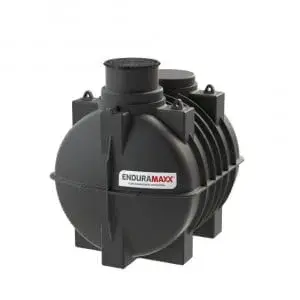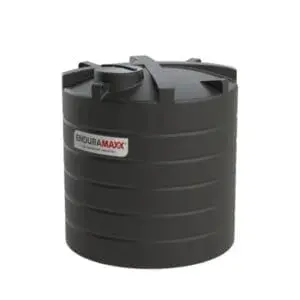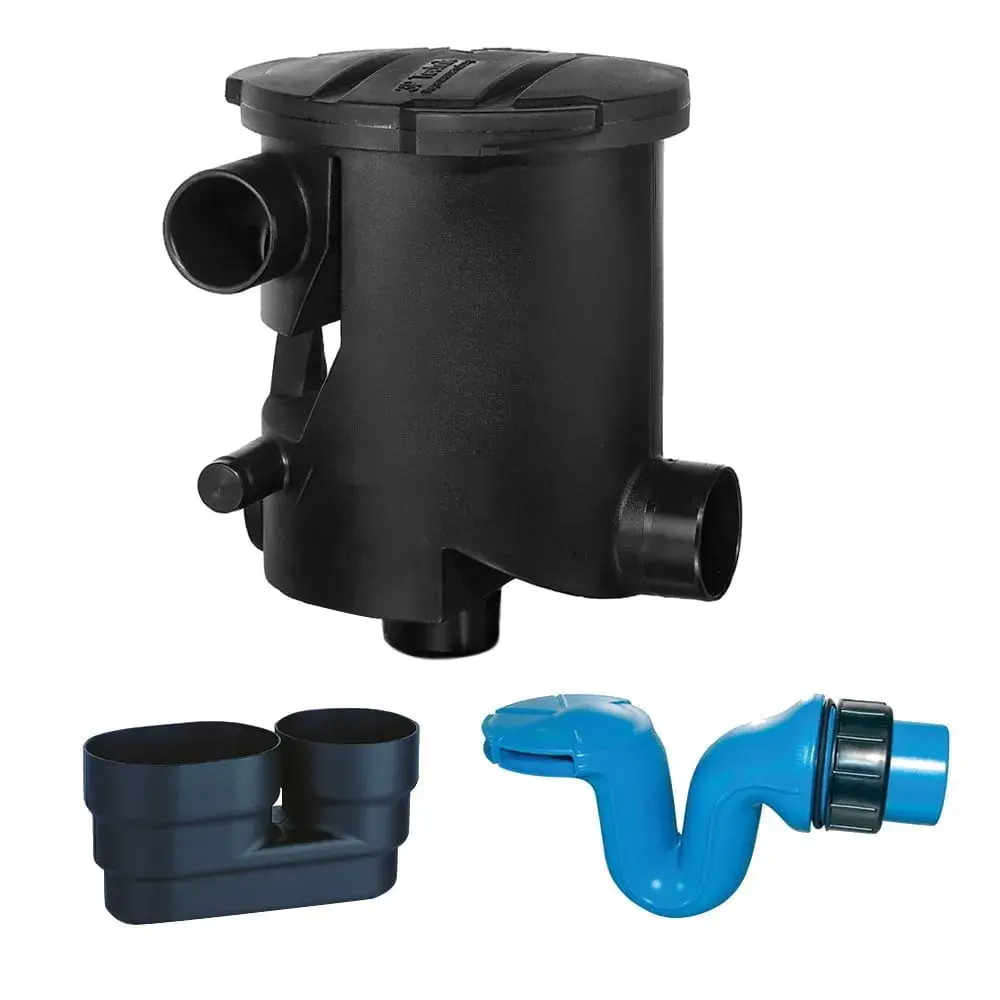Agricultural Rainwater Harvesting, a Case Study
Agricultural Rainwater Harvesting, a Case Study – James farms in north Leicestershire near to its border with Nottinghamshire and is close to completing his rainwater harvesting project which has been in development for the past two years. With over 500 hectares and 40,000 egg-laying chickens, his mains water bills are a considerable cost to the farm.
Following the construction of a new farm building and being totally reliant on mains water, James calculated that from his two largest buildings with a total roof area of 44,800 square feet he could successfully harvest rainwater which would have a dramatic effect on his annual mains water charges.
James applied for a grant from DEFRA and some three months later his application was approved and he received 40% of his total rainwater harvesting costs from the Government.
James installed a complete rainwater harvesting system himself complete with filters, pipework and eight Enduratank 26,000 litre rainwater tanks.

James uses his harvested rainwater for spraying and cleaning out his chicken sheds. With over 1,200 acres on his arable farm, James sprays at least 10 times annually and at a mains supply cost of around £1.43 per cubic metre he is able to achieve substantial savings by using harvested rainwater. Spraying with rainwater also generally achieves a far better result than mains water. The pH levels in mains water can fluctuate throughout the day and may affect the efficacy of the spray which could require the addition of buffering agents to maintain a constant pH at 5.0. With some hard water constituents including iron and calcium, pesticides containing glyphosate and sulfonylureas can be rendered almost useless and it is accepted that softer water is generally more effective with chemical sprays and as such harvested rainwater can save not only on the cost of mains water but also on the requirement to purchase water additives or conditioners.

James is able to achieve substantial savings by using harvested rainwater and having seen the benefits of rainwater harvesting he is in the process of upgrading and increasing the capacity of a similar system fitted at his second farm situated a few miles away.
View more on our agricultural rainwater harvesting systems here
For those of you who will be visiting the LAMMA 2017 Show being held at the East of England Showground on the 18th and 19th of January, Enduratank will be exhibiting at the Show and our experts will be on hand to discuss Farm Water Management and Rainwater Harvesting. You can find us in Exhibition Hall 4, stand 488. We look forward very much to meeting you there and discussing your requirements. For more details on Agricultural Rainwater Harvesting, a Case Study – please get in touch today.
View our article here on calculating your roof surface area for rainwater harvesting
Posts By Topics
- Blog (303)
- Chemical Storage Tanks (118)
- Chemical Dosing Tanks (114)
- Chemical Tanks (114)
- Water Tanks (58)
- Rainwater Harvesting Tanks (43)
- Vertical Rainwater Tanks (31)
- Vertical Storage Tanks (31)
- Cone Bottom Tanks (19)
- Conical Cone Tanks (18)
- Rainwater Harvesting (17)
- Water Bowsers (15)
- Horizontal Tanks (14)
- Potable Water Tanks (13)
- Farming (9)
- Case Studies (8)
- Industrial Storage Tanks (7)
- Liquid Fertilser Storage Tanks (6)
- WRAS Approved Potable Tanks (6)
- Wine and Beer Production (6)
- Horizontal Transport Tanks (5)
- Microbrewery (5)
- Rainwater (5)
- Category 5 Break Tanks (4)
- Cider Production (4)
- Mixer Tanks (4)
- Molasses Tanks (4)
- Polyethylene tanks (4)
- Rainwater Filter Kits (4)
- SPECIALIST & BESPOKE TANKS (4)
- Bunded Tanks (3)
- Slimline Tanks (3)
- WRAS Approved (3)
- Clarification Tanks (2)
- Crosslinked Polymer Tanks (XLPE) (2)
- Fertiliser Tanks (2)
- Sump Tanks (2)
- Tank Installation (2)
- Water Butt (2)
- underground water tanks (2)
- ACCESSORIES & FITTINGS (1)
- ATV & UTV SPRAYING UNITS (1)
- Above Ground Effluent Tanks (1)
- Bespoke Tank Frames (1)
- Category 5 Turret (1)
- Caustic Soda Tanks (1)
- Closed Top Bunded Tanks (1)
- Craft beer (1)
- Effluent Tanks (1)
- Enduramaxx (1)
- Ferric Chloride Tanks (1)
- Fire Safety Regulations (1)
- Fire Sprinkler Water Storage Tanks (1)
- Industrial Water Tank (1)
- Open Top Bunded Tanks (1)
- Open Top Cone Tanks (1)
- Open Top Vertical Tanks (1)
- Polyethylene Potable Water Tanks (1)
- Polyvinylidene Fluoride (PVDF) Tanks (1)
- Polyvinylidene Fluoride Tanks (PVDF) (1)
- Pressure Washers (1)
- Pro Series Spot Sprayers (1)
- RWH (1)
- Sodium Hydroxide Storage Tanks (1)
- Sprayer Fill-up Tanks (1)
- Uncategorised (1)
- liquid fertiliser tank (1)
Sign up to the newsletter
enduramaxx.marketing
Related Posts
How Do Underground Rainwater Harvesting Tanks Work?
Most large-scale commercial and agricultural rainwater harvesting tanks are situated underground,...
Rainwater Harvesting For Agricultural Sprayers: How Does It Work?
Rainwater harvesting for agricultural sprayers, As mains water becomes more expensive those who...
Calculating the Amount of Rainwater You Can Collect From Your Roof
Rainwater collected from the roof of your house, agricultural building, office block, restaurant,...
Related Products
From £1,080.00 inc. VAT
£900.00 exc. VAT
From £1,344.00 inc. VAT
£1,120.00 exc. VAT
From £768.00 inc. VAT
£640.00 exc. VAT
£480.00 inc. VAT
£400.00 exc. VAT





